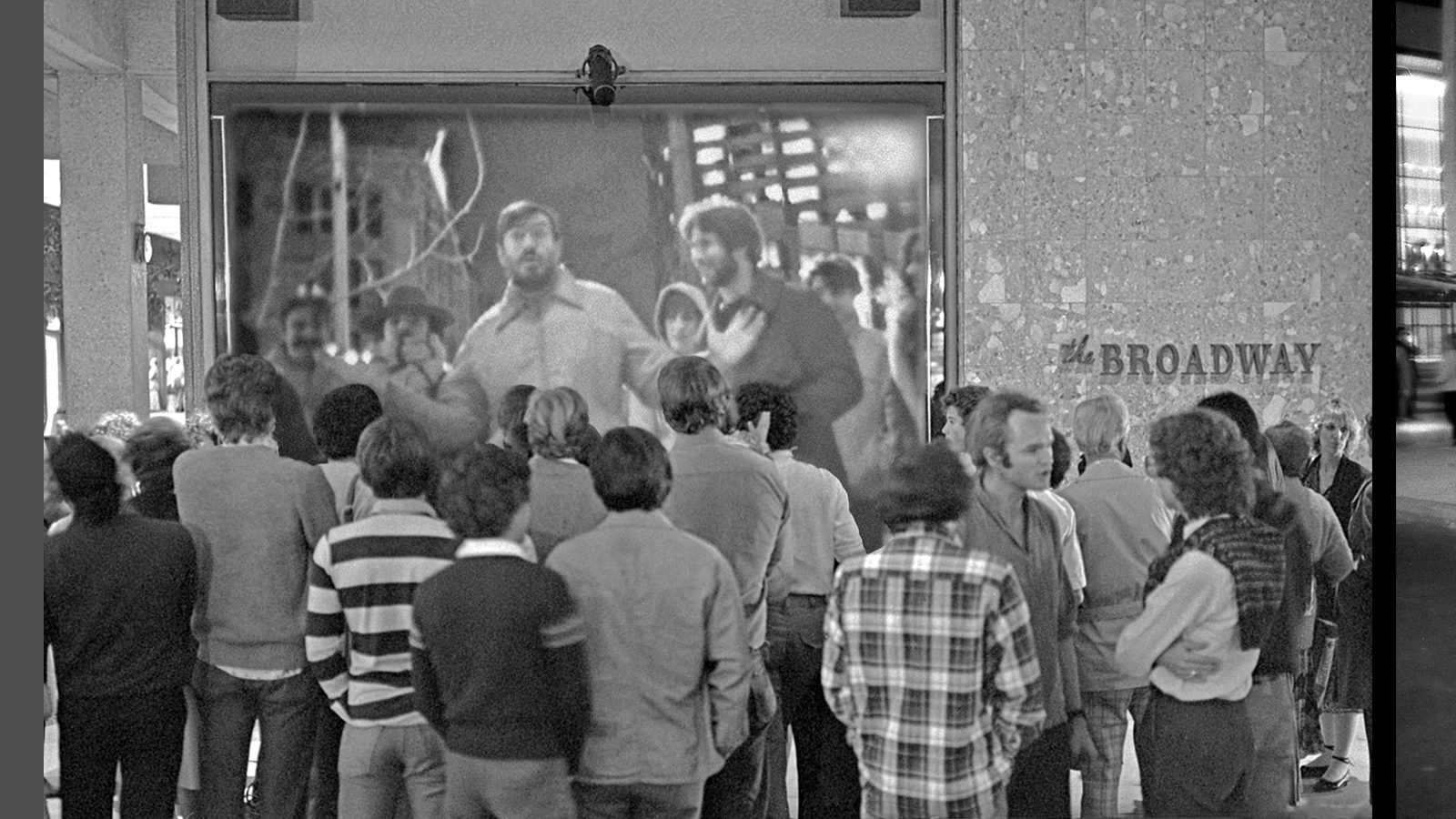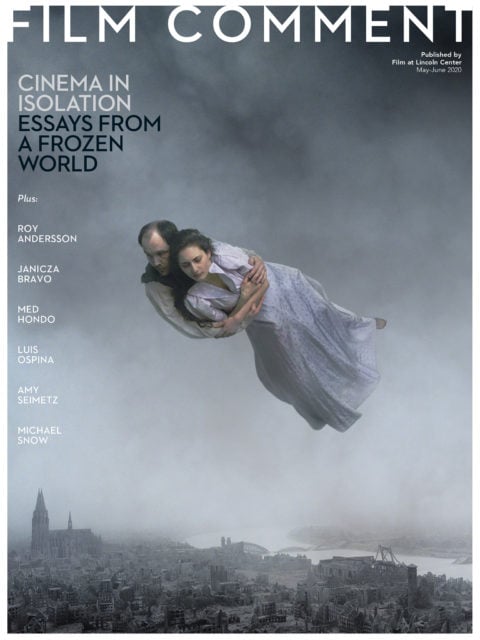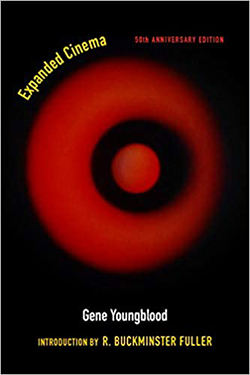
Readings: Out There

Expanded Cinema: Fiftieth Anniversary Edition
By Gene Youngblood, Fordham University Press, $34.95
Gene Youngblood’s opus Expanded Cinema is a manifesto and a prophecy, at times clairvoyant in its claims for the future, at others ridiculous in its bumptious rhapsodies. It is a young man’s book, sourced from a series on new media that Youngblood wrote while in his twenties for the Los Angeles Free Press, beginning in 1967.
In the introduction to this new edition, issued on the occasion of the book’s 50th anniversary, Youngblood attributes the coining of the phrase “expanded cinema” to Stan VanDerBeek. Like those participating in the 1965 Expanded Cinema Festival, VanDerBeek and his contemporaries in New York were exploring how cinema, the art form, might exist outside of cinemas, the exhibition spaces. This sort of activity, however, occupies but one section of Youngblood’s overview, on intermedia work. Discussed elsewhere are the early computer films of VanDerBeek, the Whitney family, and John Stehura; the television experiments at WGBH in Boston and KQED in San Francisco; and the cosmic visions realized by Jordan Belson and, in his effects work on Stanley Kubrick’s 2001: A Space Odyssey (1968), Douglas Trumbull.
 This activity represents to Youngblood not just the adaptation of new technology to new forms by artists, but a kind of teleological apotheosis. For Youngblood, born in 1942, he and his approximate contemporaries represent a new stage in human evolution, blinking at the bright dawn of what he deems the Paleocybernetic Age. Youngblood supports his proselytizing for new, nonnarrative strains of cinema with science—our increased understanding of the invisible world and Einsteinian metaphysics demand new ways of seeing. We can no longer be served by the narrative formulas of yore, and so must dispense with the old dualities for a new “simultaneous perception of harmonic opposites,” a swirling, psychedelic, synesthetic art. Youngblood’s references are those of the contemporary Californian zeitgeist—Norman O. Brown, the Esalen Institute, and R. Buckminster Fuller, who wrote Expanded Cinema’s original introduction—and in his fanatical forecasting, which sometimes lends itself to ahistoricity, you catch a glint of Silicon Valley global-village utopianism: it’s not such a broad leap from Big Sur to Burning Man. Though Youngblood criticizes what he perceives as Kubrick’s technophobia, he will return occasionally to the figure of 2001’s embryonic Star Child, for here he finds the symbol of the New Man.
This activity represents to Youngblood not just the adaptation of new technology to new forms by artists, but a kind of teleological apotheosis. For Youngblood, born in 1942, he and his approximate contemporaries represent a new stage in human evolution, blinking at the bright dawn of what he deems the Paleocybernetic Age. Youngblood supports his proselytizing for new, nonnarrative strains of cinema with science—our increased understanding of the invisible world and Einsteinian metaphysics demand new ways of seeing. We can no longer be served by the narrative formulas of yore, and so must dispense with the old dualities for a new “simultaneous perception of harmonic opposites,” a swirling, psychedelic, synesthetic art. Youngblood’s references are those of the contemporary Californian zeitgeist—Norman O. Brown, the Esalen Institute, and R. Buckminster Fuller, who wrote Expanded Cinema’s original introduction—and in his fanatical forecasting, which sometimes lends itself to ahistoricity, you catch a glint of Silicon Valley global-village utopianism: it’s not such a broad leap from Big Sur to Burning Man. Though Youngblood criticizes what he perceives as Kubrick’s technophobia, he will return occasionally to the figure of 2001’s embryonic Star Child, for here he finds the symbol of the New Man.
After a half-century under the reign of the first Starchildren, I am inclined to concede the point to Kubrick. Youngblood’s book has lasting value, but less as techno-messianic gospel than as an eager eyewitness account of a period of extraordinary creative fecundity encompassing Trumbull, Brice Howard of the NationalCenter for Experiments in Television, Carolee Schneemann, and others. And he excels on the technical, granular level: advocate of the artist-scientist, Youngblood is terribly interested in how things work, and between celebrations of the cybernetic self, he lays down a very fine primer on intersections between artists and video and computer technology at the beginning of the 1970s. Youngblood may be looking at the stars, but he’s grounded firmly in the nuts and bolts.
Nick Pinkerton is a regular contributor to Film Comment and a member of the New York Film Critics Circle.







